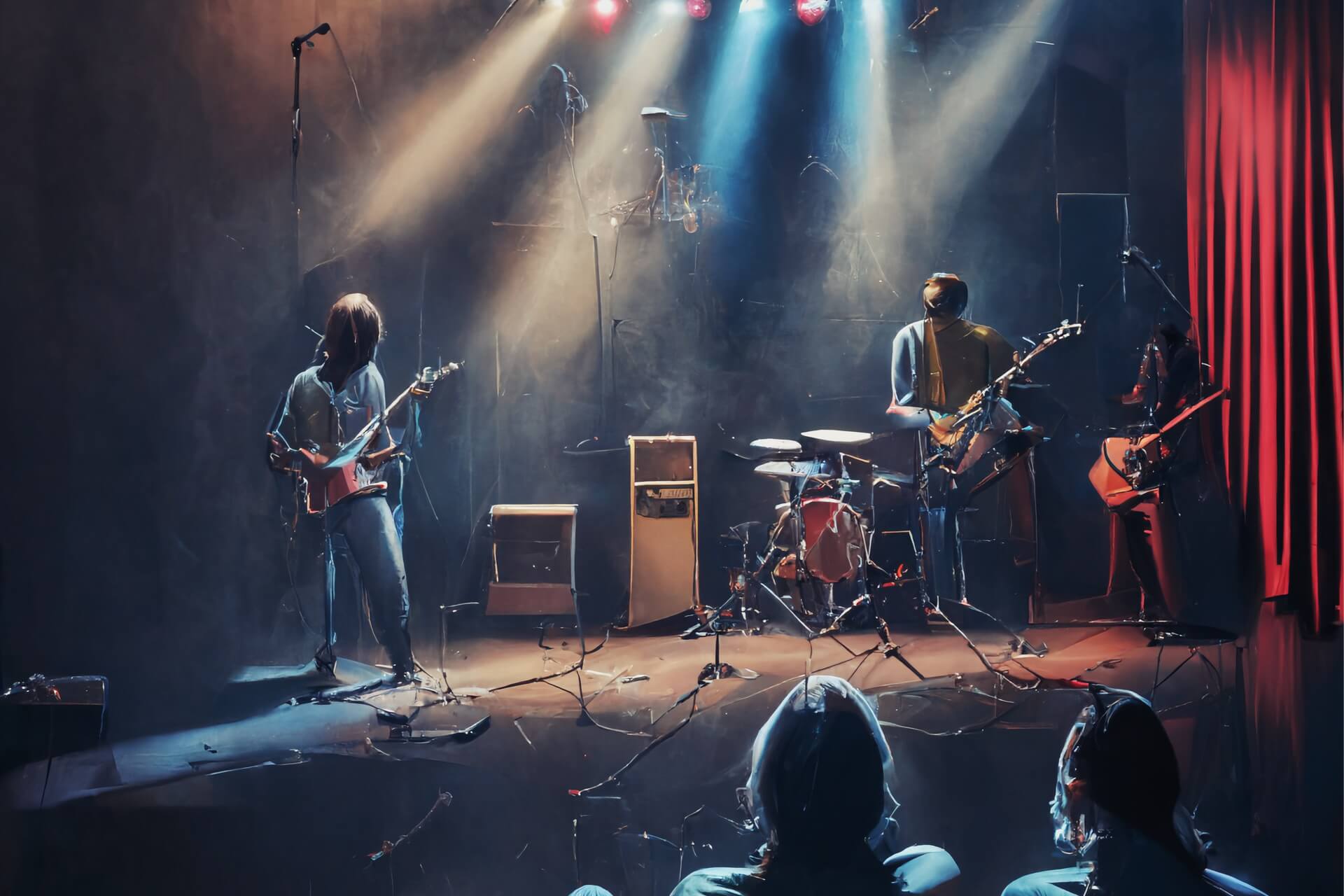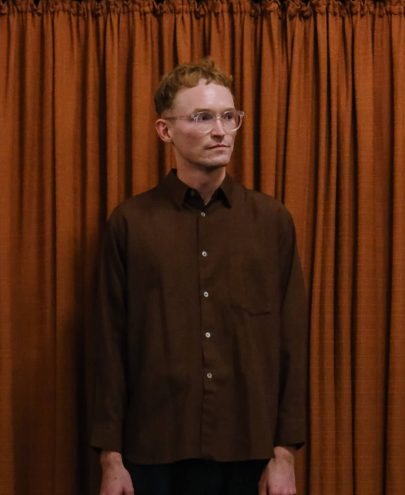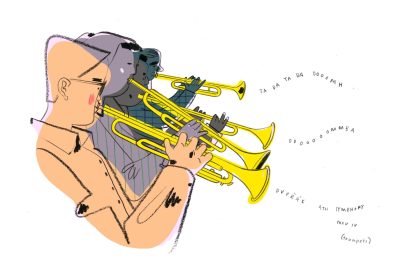May 24, 2023 Music
The modern music industry is a microcosm of the wider world. Musicians — like many workers in precarious industries — are experiencing a time of intense instability and rapid transformation. Inside the music industry (locally and, for the most part, globally) you’ll find a huge population of freelancers competing in a gig economy underlain by hegemonic corporations like Spotify, Meta and Live Nation. Together, these giants have almost entirely captured the distribution, marketing and physical performance of popular music — a near total control over the relationship between musicians and their audiences.
Taking their art to an audience now requires musicians to be small business owners, entrepreneurs and administrators, not to mention designers, photographers, editors, actors, writers, public speakers, curators, comedians and content creators. Frustrated that their focus is being taken away from creativity, musicians accept this situation with the hope of carving out space for themselves and their work. But, unfortunately for the modern musician, the bureaucratic hurdles of the corporate landscape are not the only forces bearing down on them.
Most musicians have to work other jobs to support their art, and this has intensified through the housing crisis, with its raised rents and house prices, and reduced availability of living and studio space. Further, as energy prices increase and public transport remains stagnant, the transport costs associated with rehearsals, performing and touring further minimise the possibility of a musician actually making a living from their music.
It’s no surprise, then, that musicians of the upper classes — those who are already successful or who have independent financial backing — are increasingly the only ones who can afford sustained engagement. An aspiring musician attempting to break into, and grow within, the modern music industry needs to create, learn and network. This takes a huge amount of time, meaning most creatives struggle to hold down a full-time job and can’t afford to subsist on a part-time one. Keeping up with essential living costs while pursuing art becomes all but impossible. Musicians in this position thus require either personal support (living at home, financial assistance), government support (public funding), industry support (record labels) or, ideally, all of these. The precarious nature of this support framework makes an early-career musician insecure and more vulnerable to the whims of the system they’re trying to enter.
All of this financial pressure could result in an increasingly homogenous and conservative music industry. Musicians need money to make music, so we (the taxpayers, through New Zealand On Air) fund the production of recorded music for radio broadcast. When musicians make songs for radio, their work has to fit the radio stations’ commercial needs — ultimately influencing song length, sonic characteristics, lyrical themes, production quality and stylistic decisions.
Musicians also want to grow, which means trying to attract industry attention and a primary audience. This involves getting plays on streaming platforms. When musicians make songs for streaming, they have to please playlist curators, which ultimately influences (stop me if you’ve heard this before) song length, sonic characteristics, lyrical themes, production quality and stylistic decisions.
Eventually, musicians who can no longer sustain their engagement with the commercial music industry leave and become part of what I call the communal music industry, or music community. This may be satisfying in some ways, but it’s certainly not remunerative. Unfortunately, the pressures musicians are attempting to transcend in the commercial sphere are pervasive and systemic, and their impacts extend to the wider musical communities that many hope might otherwise offer an alternative.
At the local level, most music venues operate on the verge of collapse. Inflation, urban development, gentrification and noise complaints all contribute to the pressure. Audiences decrease, too, as their disposable income is eaten up by inflation and digital at-home entertainment. Rehearsal spaces are also few and far between, and are becoming incredibly hard to maintain and sustain. Certain genres that rely on a traditional set-up of loud instruments like drums become economically unsustainable, meaning bands get smaller and genres that require less infrastructure become more prevalent.
Yet, in spite of it all, many are doing incredible work against the tide. Musicians, independent venue owners and operators, community services, student radio stations, DIY record labels, local and national promoters and individuals within all facets of the industry (including the top end of the corporate commercial side) are doing the best they can with the limited time and energy they have. But many admit that what they’re doing is unsustainable, and fear that there won’t be anyone to replace them once they are gone.
The music industry, in both its commercial and communal modes, will never disappear. But it will become even less accessible and habitable to the working and middle classes because of the immense financial burden of entry and participation. This will decrease the diversity of creative output, as those remaining will either have to produce profitable products to sustain financial engagement or be a member of a moneyed class to have the freedom to express themselves.
Economic pressures on space for writing, rehearsing and performing, the plummeting cost of home recording equipment and the preferred industry product being recorded music (for its ease of distribution) will combine to make live bands with non-digital instruments much harder to sustain. This will render live popular music as we’ve come to know it increasingly niche; the space will instead be dominated by legacy acts, and production-focused genres and solo performers will become more prevalent.
Rural and underserved areas of the country will also continue to miss out as all-ages venues are lost and not replaced. The young population who are unable to attend the R18 shows subsidised by alcohol sales will experience less live music, leading to fewer young people being inspired to make music and intensifying the downward spiral of diminishing returns. Those who are immovably interested in music will be forced to move elsewhere, robbing the local community of the ability to halt the negative momentum.
There will still be Lordes and Benees, but will there be another Flying Nun? There will still be Six60 at Eden Park, but will there be young bands playing house parties in Dunedin? Will there be a new Wax Chattels at Whammy?
I don’t fear that the music industry will fail. I fear that music will become the cultural pastime of an entrenched elite class. No longer an accessible mode of artistic expression, or a culture to contribute to, but a product to consume. As long as there’s money to be made, there will still be a music industry, but will there be a music community? I hope so. But we’ll need more than hope.
–
This story was published in Metro N°438 as part of our quite bummery Cultural Collapse special.
Available here.






